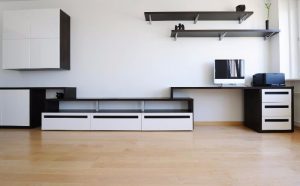Kitchen cabinet construction is an art form and one of the most sought after crafts within the hospitality industry. A well designed and constructed cabinet ensures that your kitchen can withstand all the stress and strain that everyday life places on it. Several different techniques can be used for built-in Adelaide joinery for the kitchen, but most are preferred by glue and fixed pins. This article will discuss each of these methods’ pros and cons so that you can make an informed decision when selecting what type of joinery you would like to have.
 Glue and fixed pinning can be applied to just about any piece of wood within the kitchen, so it’s only dependent on the design or layout you require. If you are building a custom cabinet, then the type of built-in type cannot be pinned or glued directly to any surface. Instead, it is required that certain cabinet edges are cut according to pre-planned patterns. These patterns can be anything from traditional, vintage, contemporary or even country-like. Generally, the cabinet edges are rounded so that they match the fitted board’s edge that is used as the joint.
Glue and fixed pinning can be applied to just about any piece of wood within the kitchen, so it’s only dependent on the design or layout you require. If you are building a custom cabinet, then the type of built-in type cannot be pinned or glued directly to any surface. Instead, it is required that certain cabinet edges are cut according to pre-planned patterns. These patterns can be anything from traditional, vintage, contemporary or even country-like. Generally, the cabinet edges are rounded so that they match the fitted board’s edge that is used as the joint.
The benefits of using this type of cabinet Adelaide joinery for the kitchen is that the joints are incredibly strong, secure and low maintenance. Once the wood boards have been cut to the required shape, then a few hours is all that it takes to screw them together. To ensure that the joint is as secure as possible, you should allow the cabinets to dry overnight before you start using them the next morning. In general normal light, dampening is all that is required to achieve the right jointing. As the glue adheres to the wood’s surface, it creates a tough and durable bond that will not crack or weaken over time. If the glue does become brittle or lose, it is simply a simple matter of removing the old one and replacing it with a new one.
This type of joinery for the kitchen has been used in kitchens for decades, but its use has been on the decline over recent years because of engineered wood cabinets’ popularity. The engineered woods are much stronger and more resistant to the elements such as moisture and temperature changes than their natural counterparts, which means that the use of built-in cabinet joinery for the kitchen has become redundant. However, recent innovations in cabinet construction mean you can get the same strong protection for your cabinet sides from MDF or plywood.
The main benefit of using plywood cabinet Adelaide joinery for the kitchen is that it allows you to use almost any kind of wood you like. You can use various stains to give the cabinet a unique look, or you may choose to use a single colour. The use of stains is entirely up to you, but most people choose a solid stain such as walnut or mahogany for their cabinet’s side units because it provides a rich, dark and classy look to the cabinets that will enhance your kitchen’s decor. On the other hand, there are some option allows you to use just about any colour of wood you like, although it is recommended that you avoid darker shades unless you have ample light in the room, or it will be required for added emphasis.
Built-in cabinet joinery for the kitchen allows you to use the interior joinery options such as dowels, mortise and tenon joints or glue along with tongue and groove hardware to help create a consistent and clean look. This means that the joinery will look like part of the cabinetry rather than an addition that makes the room look disorganized. The use of these options will also allow you to use various size hardware such as knobs smaller in dimension than those found on standard hardware to create a neat and tidy finish.
